While recessed lighting provides a sleek and modern look for any room, the traditional incandescent or halogen bulbs used in these fixtures can be costly to operate and have a shorter lifespan. Additionally, they produce more heat than light, which can contribute to uncomfortable temperatures in your home.

Fortunately, LED technology has advanced significantly in recent years, making it a viable option for replacing traditional bulbs in recessed lighting fixtures. LED bulbs use significantly less energy, have a longer lifespan, and produce less heat compared to incandescent or halogen bulbs. In this guide, we will discuss how to convert recessed lighting to LED.
Necessary Items
Before you begin the conversion process, there are a few items you will need to gather:
- LED Bulbs: It is essential to select LED bulbs that are compatible with your recessed lighting fixtures. Most recessed lighting fixtures use standard medium base sockets, so make sure to choose LED bulbs with the same base type.
- Ladder: Depending on the height of your ceiling, you may need a ladder to reach the recessed lighting fixtures.
- Screwdriver: You will need a screwdriver to remove the existing bulbs and fixtures.
- Wire Strippers: If your recessed lighting fixtures are hardwired, you will need wire strippers to disconnect them from the electrical wiring.
- Optional Items: If you want to control the brightness of your recessed lighting, you may need to purchase a dimmer switch compatible with LED bulbs.
8 Things to Know Before You Start
1) Determine the Compatibility with LED bulbs
Before you start the conversion process, it is essential to determine if your existing recessed lighting fixtures are compatible with LED bulbs. Most modern fixtures are designed to work with LED bulbs, but older ones may not. You can check the manufacturer’s specifications or consult a professional electrician for guidance.
2) Consider the Trim Style
LED bulbs come in various shapes and sizes, so it is essential to choose a trim style that will fit your recessed lighting fixtures. You can find LED bulbs with standard or retrofit trims, depending on the design of your fixtures.
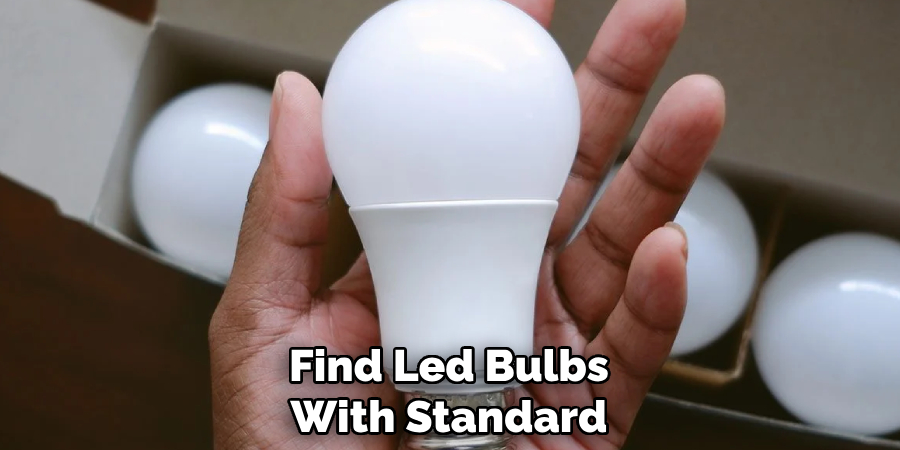
3) Check for Heat Dissipation
Heat dissipation is an important factor to consider when converting recessed lighting to LED. Unlike traditional bulbs, LED bulbs produce minimal heat, which can cause issues with the fixtures if not dissipated properly. Make sure your chosen LED bulbs have proper heat dissipation mechanisms, or opt for a retrofit trim that includes a heat sink.
4) Know the Lumens and Color Temperature
In addition to wattage, it is crucial to consider the lumens and color temperature of your LED bulbs. Lumens measure the amount of light produced by a bulb, while color temperature determines the appearance of light (warm or cool). Both factors can impact the overall look and feel of a room.
5) Check for Energy Efficiency Ratings
When choosing LED bulbs, make sure to check for energy efficiency ratings, such as Energy Star certification. These ratings can help you determine the energy savings and overall cost-effectiveness of your LED bulbs.
6) Consider a Dimmer Switch
If you want to control the brightness of your recessed lighting, consider purchasing a dimmer switch compatible with LED bulbs. Make sure to choose an LED dimmer switch specifically designed for this purpose, as traditional incandescent dimmer switches may not work correctly with LED bulbs.
7) Plan for Proper Disposal
LED bulbs contain small amounts of potentially harmful materials, so it is essential to plan for proper disposal of your old incandescent or halogen bulbs. Many hardware stores offer recycling programs for these types of bulbs.
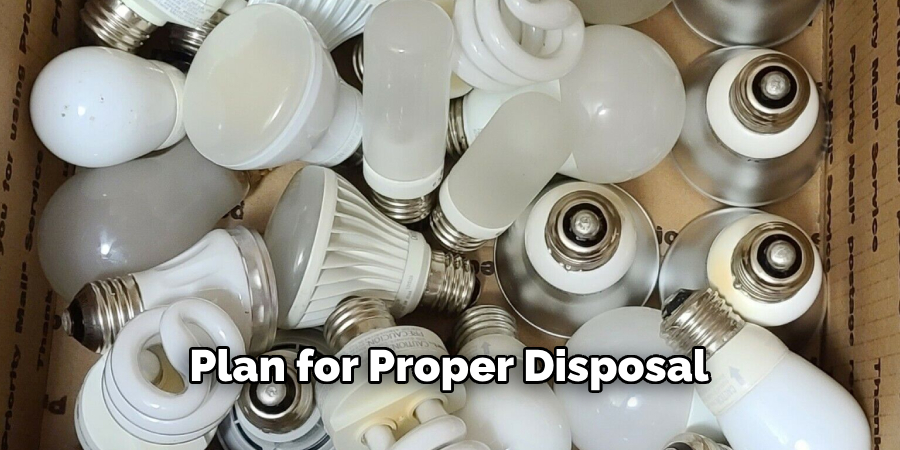
8) Consult a Professional Electrician
If you are uncomfortable working with electrical wiring or unsure about the compatibility of your recessed lighting fixtures, it is best to consult a professional electrician for assistance. They can help ensure a safe and successful conversion process.
Converting recessed lighting to LED can provide significant energy savings, a longer lifespan, and a more comfortable living environment. By following these tips on how to convert recessed lighting to LED and considering important factors before starting the conversion process, you can successfully upgrade your recessed lighting fixtures to LED technology. Remember to always prioritize safety and consult a professional if needed.
12 Steps on How to Convert Recessed Lighting to LED
Step 1: Choose the Right LED Bulb
The first step in converting your recessed lighting to LED is to choose the right LED bulb. Consider factors such as compatibility, trim style, heat dissipation, lumens, and color temperature. It is also essential to check for energy efficiency ratings and consider adding a dimmer switch if desired.
Step 2: Gather Necessary Items
Make sure you have all the necessary items before starting the conversion process. These may include LED bulbs, a ladder, a screwdriver, wire strippers, and optional items like a dimmer switch. And don’t forget to prioritize safety and consult a professional if needed.
Step 3: Turn off the Power
Before working on any electrical fixtures, make sure to turn off the power at the circuit breaker. This will ensure your safety and prevent any accidents. But remember to never touch any wires or connections, even with the power off.
Step 4: Remove Existing Bulbs and Fixtures
Using a screwdriver, carefully remove the existing bulbs and fixtures from your recessed lighting. If your fixtures are hardwired, you will need to use wire strippers to disconnect them from the electrical wiring.
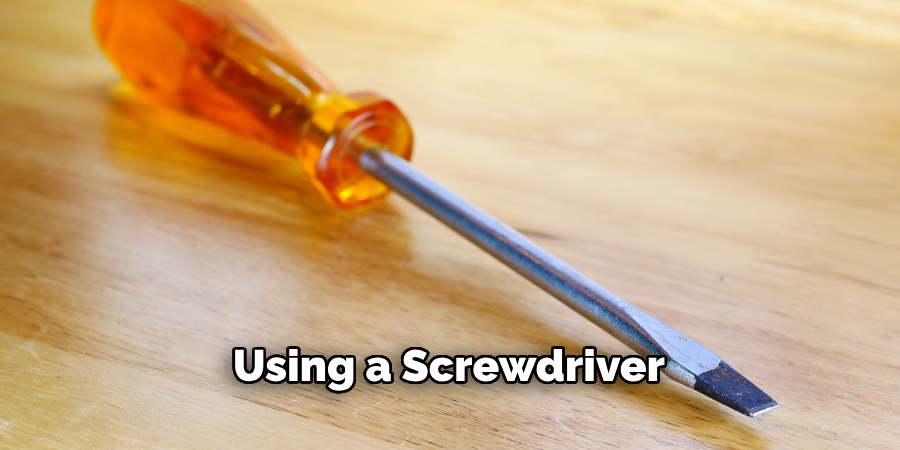
Step 5: Check for Compatibility
Once the old bulbs and fixtures are removed, double-check the compatibility of your recessed lighting with LED bulbs. If you are unsure, consult a professional electrician for guidance. So you can ensure a safe and successful conversion process.
Step 6: Install LED Bulbs
Carefully install the new LED bulbs into your recessed lighting fixtures. Make sure to follow any specific instructions from the manufacturer, and do not over-tighten the bulbs. As LED bulbs produce minimal heat, they may not need to be screwed in as tightly as traditional bulbs.
Step 7: Install Retrofit Trims (Optional)
If your recessed lighting fixtures have a different size or shape, you may need to install retrofit trims to fit the new LED bulbs. These trims are designed to adapt to various sizes and styles of existing fixtures, making the conversion process easier.
Step 8: Connect Electrical Wiring (If Necessary)
If your fixtures are hardwired, you will need to use wire connectors to connect the electrical wiring to the new LED bulbs or retrofit trims. Make sure all connections are secure before proceeding. Never touch any wires or connections with the power on.
Step 9: Turn the Power Back On
Once all connections are secure, turn the power back on at the circuit breaker. Test your new LED bulbs to ensure they are working correctly. If you encounter any issues, turn off the power again and consult a professional electrician for assistance.

Step 10: Adjust Trim Direction (If Necessary)
LED bulbs have a narrower beam angle than traditional bulbs, so you may need to adjust the direction of your retrofit trims or fixtures to achieve the desired lighting effect. You can do this by twisting the trim or rotating the fixture.
Step 11: Dispose of Old Bulbs Properly
Proper disposal of old incandescent or halogen bulbs is crucial since they contain small amounts of potentially harmful materials. Many hardware stores offer recycling programs for these types of bulbs, so make sure to dispose of them responsibly.
Step 12: Enjoy Your Upgraded Lighting
Congratulations! You have successfully converted your recessed lighting to LED. Now, you can enjoy the energy savings, longer lifespan, and improved lighting quality provided by LED technology. Remember to regularly check and replace your bulbs as needed for optimal performance.
No matter what type of recessed lighting you have or what your ultimate goal is, converting to LED can offer significant benefits. By following these 12 steps on how to convert recessed lighting to LED and considering important factors before starting the conversion process, you can successfully upgrade your recessed lighting fixtures to LED technology.
8 Things to Avoid When Converting Recessed Lighting to LED
1) Rushing the Process
Converting recessed lighting to LED requires careful planning and execution. Rushing through the process can result in dangerous mistakes or an unsuccessful conversion. Take your time and follow safety precautions.
2) Using Incompatible Bulbs
Not all LED bulbs are compatible with all types of recessed lighting. It is crucial to research and choose the right LED bulbs for your specific fixtures. Otherwise, you may experience flickering or dimming issues.
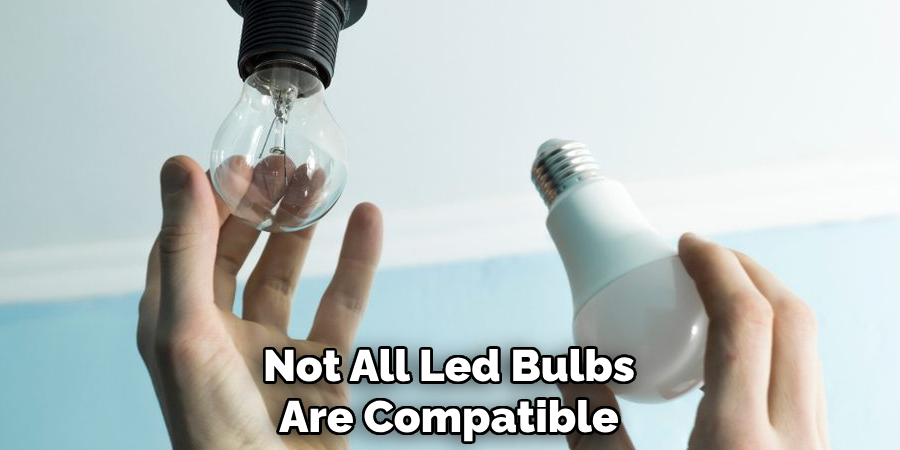
3) Overlooking Heat Dissipation
LED bulbs produce less heat than traditional bulbs, but they still generate some heat. When converting recessed lighting to LED, ensure that the fixtures have proper ventilation and do not trap heat, which can reduce the lifespan of the bulbs.
4) Neglecting Energy Efficiency Ratings
One of the main reasons for converting to LED is energy efficiency. However, not all LED bulbs are created equal in this aspect. Be sure to check for energy efficiency ratings and choose bulbs that will save you money in the long run.
5) Forgetting About Dimmer Compatibility
If you desire to have dimmable LED lighting, make sure to choose bulbs and fixtures that are compatible with dimmer switches. Otherwise, you may experience issues or even damage to the bulbs.
6) Improperly Connecting Electrical Wiring
When working with electrical wiring, it is crucial to follow proper safety precautions and techniques. If you are not confident in your abilities, it is best to consult a professional electrician for assistance.
7) Overlooking Trim Direction and Angle
As mentioned before, LED bulbs have a narrower beam angle than traditional bulbs. It is essential to adjust the trim direction and angle accordingly to achieve the desired lighting effect without any shadows or dark spots.
8) Not Disposing of Old Bulbs Properly
Proper disposal of old bulbs is not only for safety reasons but also for environmental concerns. Improperly disposing of incandescent or halogen bulbs can harm the environment and may even be illegal in some areas. Make sure to follow proper disposal methods for your old bulbs.
Overall, converting recessed lighting to LED can provide many benefits, but it is essential to do it correctly and safely. By avoiding these common mistakes on how to convert recessed lighting to LED, you can ensure a successful and hassle-free conversion process. Remember to always prioritize safety and consult a professional if needed.
8 Additional Tips for a Successful Conversion to LED
1) Consider the Color Temperature
LED bulbs come in various color temperatures, from warm white to cool white. Make sure to choose the right color temperature that fits your desired lighting effect and ambiance. And remember, not all fixtures are suitable for dimmable bulbs, so be sure to check before purchasing.
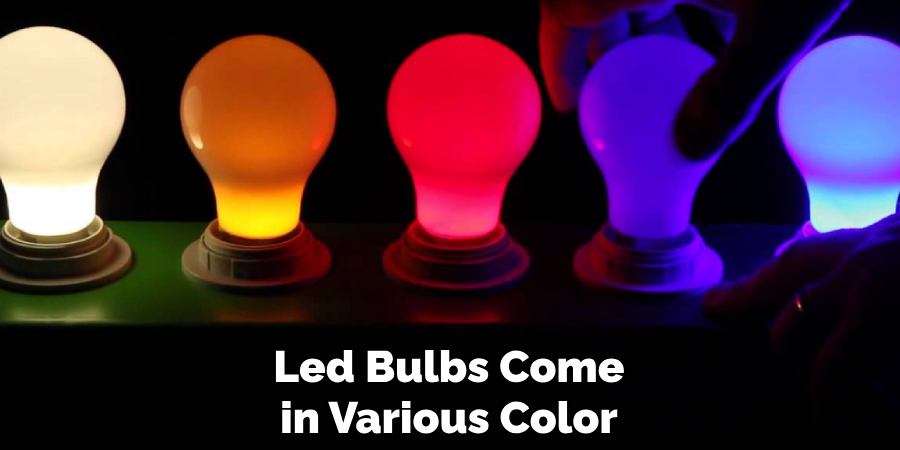
2) Choose the Right Bulb Shape
LED bulbs come in different shapes and sizes, just like traditional bulbs. Consider the shape of your existing fixtures and choose LED bulbs that will fit and provide the desired lighting effect. But don’t forget to also check for compatibility and energy efficiency.
3) Invest in Quality Bulbs and Fixtures
When converting to LED, it may be tempting to opt for cheaper options. However, investing in quality bulbs and fixtures can save you money in the long run. They have a longer lifespan and better energy efficiency, making them a more cost-effective choice.
4) Install a Surge Protector
LED bulbs are more sensitive to power surges than traditional bulbs. To protect your investment, consider installing a surge protector in the circuit that powers your recessed lighting. While this may be an additional cost, it can save you from costly replacements or repairs.
5) Check for Rebates and Incentives
Many utility companies offer rebates and incentives for switching to energy-efficient lighting, such as LED. Do some research and see if you can take advantage of any savings programs in your area. If so, it can further reduce the cost of converting to LED.
6) Test Different Bulb Types
LED technology is continually advancing, and newer bulbs may offer improved features or better performance. Don’t be afraid to test out different types of LED bulbs to find what works best for your specific application.
7) Consider Retrofit Kits
If you have non-LED recessed lighting, you can still convert to LED without replacing the entire fixture. Retrofit kits are available that allow you to install LED bulbs into your existing fixtures, saving time and money.
8) Keep Maintenance in Mind
While LED bulbs have a longer lifespan than traditional bulbs, they will eventually need to be replaced. Consider accessibility when choosing fixtures and installing them to make maintenance and bulb replacement easier in the future. In conclusion, with proper planning, research, and attention to detail, converting recessed lighting to LED can bring significant benefits to your home or business.
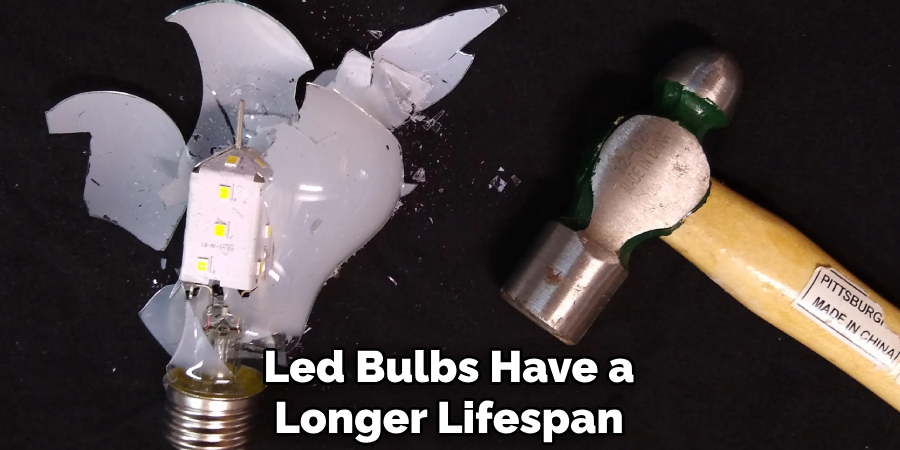
Just remember to avoid these mistakes and follow these additional tips for a successful and efficient conversion process. So why wait? Start upgrading your recessed lighting fixtures today and experience the many benefits of LED technology.
Frequently Asked Questions
Can LED Bulbs Be Used in Any Recessed Lighting Fixture?
No, not all LED bulbs are compatible with all types of recessed lighting. It is essential to research and choose the right LED bulbs for your specific fixtures to avoid issues.
Do LED Bulbs Work with Dimmer Switches?
Some LED bulbs are designed to be dimmable, while others are not. It is crucial to check for compatibility before installing dimmable LED bulbs and fixtures.
Do LED Bulbs Save Money on Energy Bills?
Yes, LED bulbs are significantly more energy-efficient than traditional bulbs and can help save money on energy bills in the long run. However, it is essential to choose high-quality and energy-efficient LED bulbs for maximum savings. So be sure to check for Energy Star ratings when purchasing.
Can I Convert My Existing Recessed Lighting to LED?
Yes, you can convert your existing recessed lighting to LED using retrofit kits or by replacing the entire fixture. Retrofit kits are a more cost-effective option and require less time and effort for installation. However, if you prefer new fixtures, make sure they are compatible with LED bulbs before purchasing.
Is It Safe to Convert Recessed Lighting to LED on My Own?
While converting recessed lighting to LED is a relatively simple process, it is always best to consult a professional electrician if you are not confident in your abilities. Safety should always be the top priority when handling any electrical work. Overall, it is safe to convert recessed lighting to LED as long as proper measures and precautions are taken.
Can I Mix LED Bulbs with Traditional Bulbs?
It is not recommended to mix LED bulbs with traditional bulbs in the same fixture. This can cause issues with compatibility, dimming, and overall performance of the lighting. It is best to stick with one type of bulb throughout your recessed lighting system.
Do I Need to Dispose of LED Bulbs Differently Than Traditional Bulbs?
Yes, LED bulbs contain electronic components that require proper disposal methods to prevent environmental harm. Always check with your local waste management facility for guidelines on disposing of LED bulbs correctly.
Conclusion
In conclusion, converting recessed lighting to LED can bring many benefits, including energy and cost savings, improved lighting quality, and reduced environmental impact. However, it is crucial to avoid common mistakes such as not considering color temperature or disposing of old bulbs properly.
Follow the additional tips listed on how to convert recessed lighting to LED for a successful conversion process, and always prioritize safety. With proper planning and attention to detail, you can enjoy the many advantages of LED technology in your home or business. So don’t hesitate to make the switch and start experiencing better lighting today!

